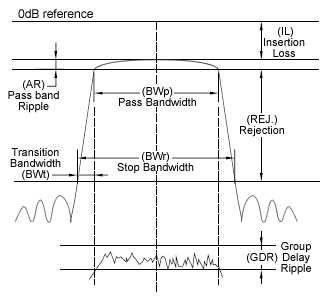Advantage of DeMint SAW Devices
DeMint Electronics has gained a successful development of Saw components, due to our flexible design capabilities and cost-optimizing production facilities. In addition to our extensive offering of standard Saw devices, DeMint has diverse Engineering experience spanning hundreds of custom designed saw components, Bandpass Filters, Low Loss Filters and saw based subsystems.
As DeMint Company Spirit:
- Honesty is our business policy.
- Perfection is our quality system.
- Sharing cost saving with customers is our business target.
DeMint reliably deliver high-quality components according to the each customer special needs with respect to performance, costs, and technology modifications.
Download Complete DeMint SAW Product Catalogue in PDF file (917KB).
Required to effectively design a Saw Component
Generally, a saw manufacturer will offer their most popular devices as standards creating a reference for Engineers to design from. Typically, a standard device is available for most common applications. However, for applications requiring parameters that are not currently considered industry standards. In this case, the following information is required to effectively design a filter:

Filter Group Delay Variation over Pass Bandwidth
Nominal Frequency (Fn):
The nominal values of the center frequency F0 and is used as the reference frequency of related standard. Unit of nominal frequency is in MHz.
Insertion Loss (IL):
The logarithmic ratio of the power delivered to the load impedance before the filter is inserted to the power delivered to the load impedance after the filter is inserted. Unit of Insertion loss in is dB. Advances in filter design techniques routinely allow for a design incorporating a specification of under 10dB Insertion Loss, however, the minimum attainable Insertion Loss is generally influenced by the Fractional Bandwidth and the influences of this ratio on the applicable substrate material. The Insertion Loss value will generally increase when approaching the fractional bandwidth limit of a substrate material. For instance, a Fractional Bandwidth value of 8% will generally produce lower Insertion Loss than a Fractional Bandwidth value of 30% using the same substrate material.
Pass Bandwidth (BWp):
The frequency interval in which the relative attenuation (the attenuation from the minimum insertion loss) is equal to the specified value 3dB.
Stop Bandwidth (BWr):
The frequency interval in which the relative attenuation (the attenuation from the minimum insertion loss) is equal to the specified value of "A" dB.
Transition Bandwidth (BWt):
Otherwise referred to as Skirts, the area between the Stop Band and the Passband found on both sides of the Passband.
Pass band Ripple (AR):
The difference between the minimum peak attenuation and the maximum peak attenuation within a pass band. Unit is in dB.
Group Delay Ripple (GDR):
The difference between the maximum and minimum value of the group delay in the specified range of the pass band. Unit in μs.
Rejection (REJ.):
All ranges of the saw components not including the Passband. The Rejection can also be referred to as the Rejection Range, or Stop Band. We can refer to this as the range in which the Relative Attenuation is larger than the specified Rejection side. With proper material selection and design, Rejection of 50dB, or greater, is possible within a wide selection of fractional bandwidths and shape factors.
Terminating Impedance (Zt):
Impedance presented to the filter by the source or by the load.
Package:
Factors affecting the size of the package used in saw design include parameters associated with Center Frequency, Bandwidth, and Shape Factor, among other minor considerations. For instance, lower Frequencies require larger substrate, thereby increasing the size of the packages available to the designer. Consequently, an equally important challenge of package size reduction is always considered by DeMint Design Engineers in an attempt to meet the desired parameters in the smallest package possible. In selecting a package, we recommend stating general preferences. Without this input, DeMint will design using the most cost effective approach balancing parameter requirements with cost and manufacturability.